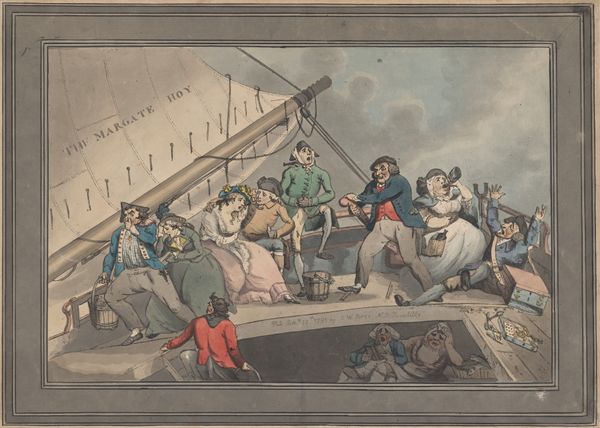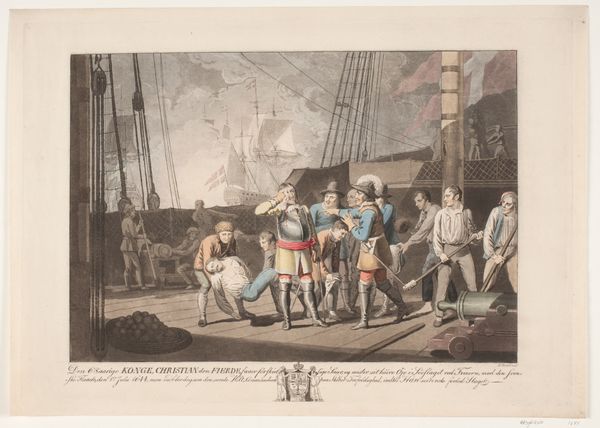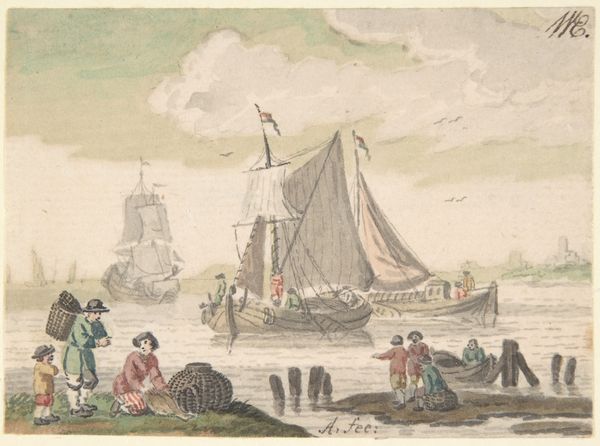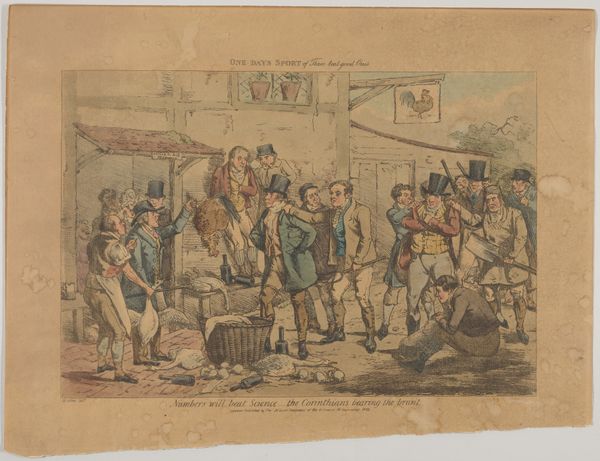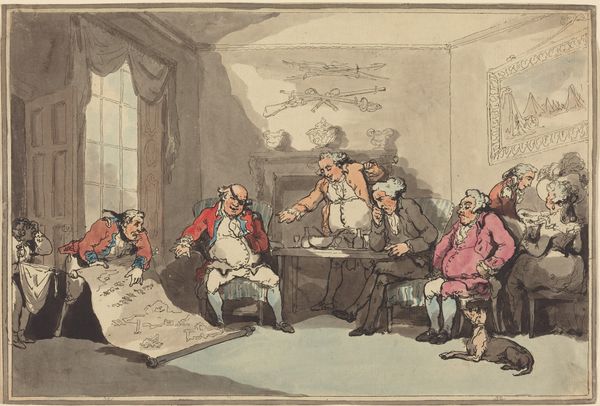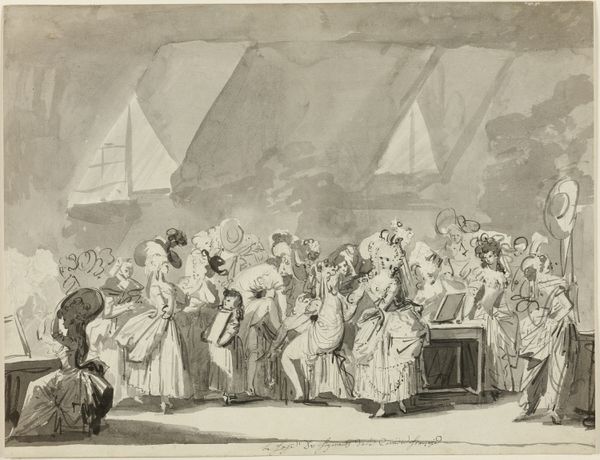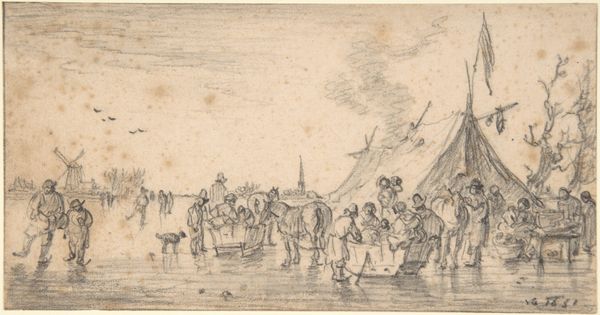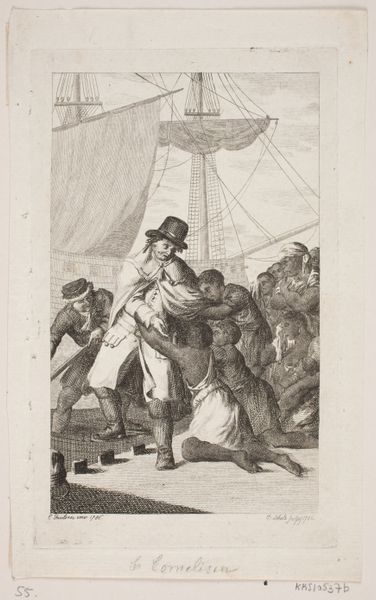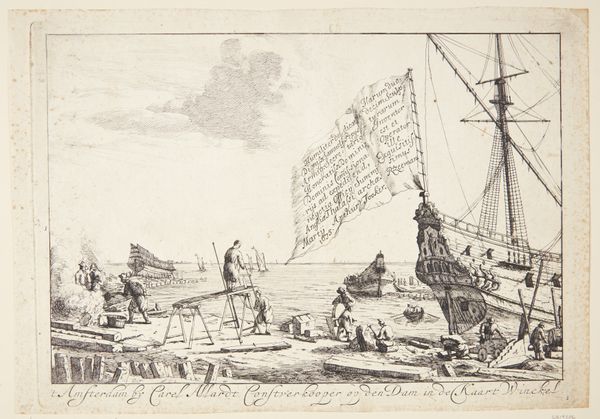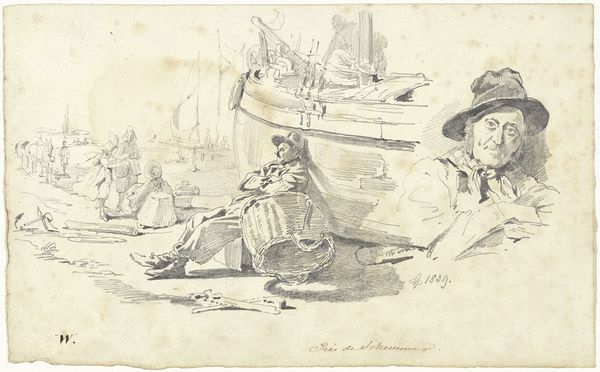
drawing, coloured-pencil, print
#
drawing
#
coloured-pencil
# print
#
landscape
#
coloured pencil
#
genre-painting
Dimensions: Sheet: 14 3/8 × 19 7/8 in. (36.5 × 50.5 cm)
Copyright: Public Domain
Curator: Looking at Charles Catton, Jr.'s "The Margate Hoy," executed around 1795, one is immediately struck by the sheer chaos contained within the composition. What's your first take on this piece? Editor: Well, "chaos" is a good word for it. My eye bounces all over the place—the skewed perspective of the deck, the wild-eyed figures. The materiality seems fragile, somehow—coloured pencil and print lend it an airy, almost feverish quality. Curator: Precisely! The Hoy was a common packet boat transporting passengers from London to Margate. The imagery, though seemingly comedic on the surface, speaks volumes about 18th-century anxieties surrounding travel and class mingling. The shared discomfort of the figures crammed together is almost a character itself. Notice how those below deck look? The expressions! Seasickness wasn't just a physical ailment; it became a symbol of disruption and the body’s vulnerability. Editor: I see your point, and it’s cleverly conveyed. Looking at the upper register, the composition uses a strong diagonal created by the mast, effectively bisecting the scene, reinforcing the spatial dynamic. Then, that pale wash, the minimal coloring serves to unify everything despite the mayhem depicted. How do you think the symbols influence our contemporary view of that era? Curator: Hugely. The passengers, exhibiting a range of exaggerated reactions—from stoic acceptance to utter despair—highlight the performative aspects of travel. It also reinforces established social structures of the time. Each figure is a type— the affected lady, the overbearing captain, the poor souls below deck — roles reinforced time and again within similar cultural artifacts. This artwork essentially codifies those societal perceptions. The very act of documentation turns into the symbolic. Editor: The scene does feel like a stage. And thinking about its semiotic dimension now, the repeated motif of bodily distress really hammers home the underlying themes. Each element contributes to a unified field of disquiet and anxiety, and is a sign of that condition. I find that aesthetically very pleasing. Curator: I couldn't agree more. It's an era captured not just through its historical realities but its anxieties and aspirations— a truly evocative piece. Editor: Yes, "The Margate Hoy" provides not just a view of transportation but of the interior states of people bumping against each other both literally and figuratively. Fascinating.
Comments
No comments
Be the first to comment and join the conversation on the ultimate creative platform.
